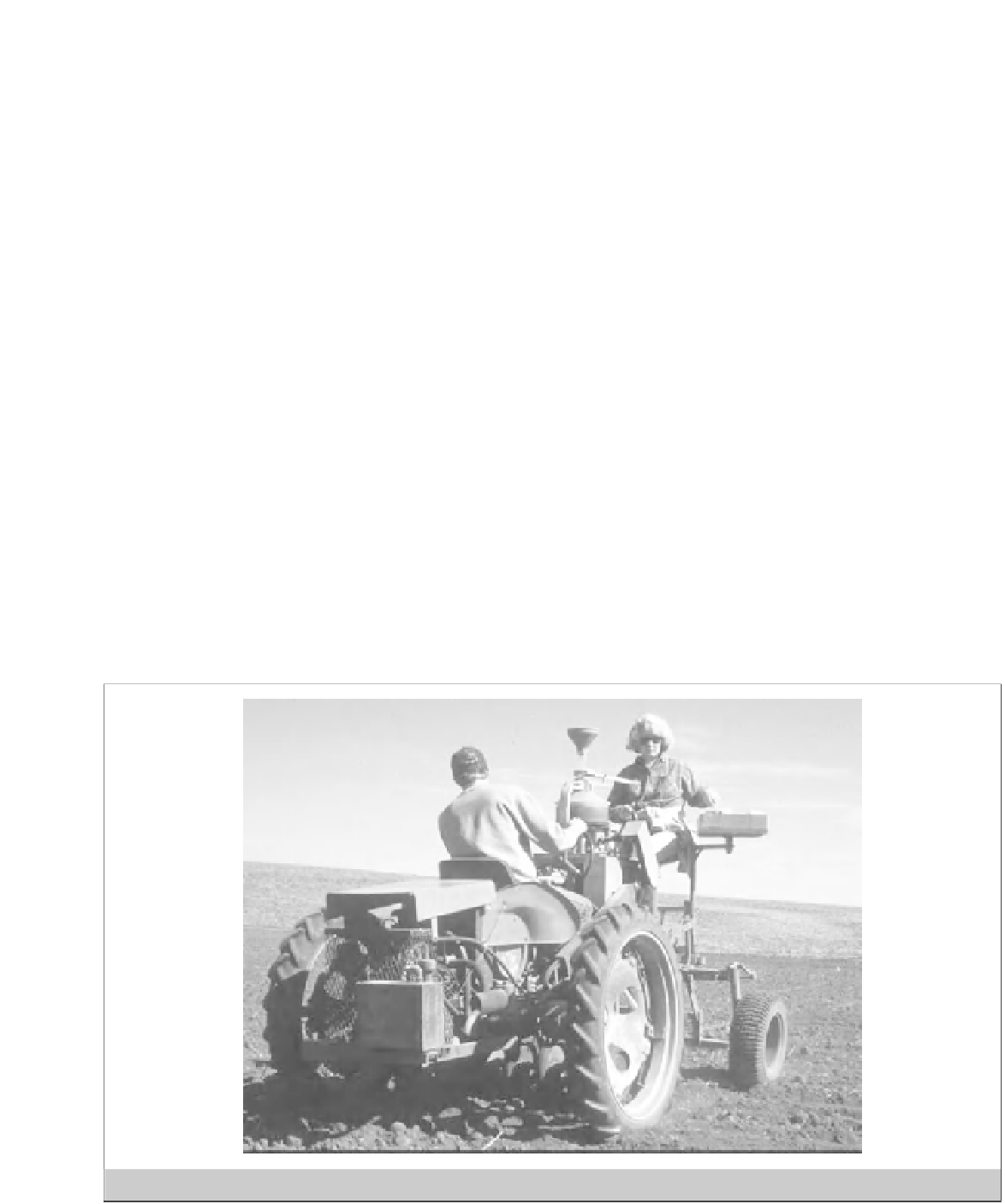Agriculture Reference
In-Depth Information
Machinery
Guard rows and discard rows
It is common practice to surround trials (and sometimes
even individual plots with
guard
or
discard rows
. These
are areas planted to a specific cultivar or genotype, which
is not part of the evaluation test. Guard rows are used
for several reasons, including:
Over the past decades there has been an increase in
the availability of small scale machinery suitable for
field plot trials. Most of the machines are designed as
miniature versions of what is used in larger scale agricul-
ture. Tasks, which can now be mechanically orientated,
include:
•
If any mechanical damage occurs (e.g. a tractor spray
unit accidentally runs over a plot), it is likely to hap-
pen to the edge plots. If these are to be discarded, then
this damage is less likely to affect the performance of
any of the test or control entries
•
Planting
•
Weed, disease and pest control
•
Harvesting
•
Phenotypic performance can be greatly increased by
avoiding differential edge effects. Therefore plots
that are grown on the edge of a trial will not have
any competition on one side, while all other test
entries will be affected by competition from adjacent
plots
It is always desirable to plant field trials mechanically
as this is likely to result in more uniform plots than can
be achieved by hand planting. This is almost always true
for small, and relatively small, seeded crops (e.g. bar-
ley, wheat and rapeseed). When the planting material is
larger (e.g. potato tubers) hand planting can produce as
good, or better, results compared to mechanical plant-
ing. The need for automatic planting will be dependant
therefore on the size of seed to be planted, the density of
seed sown and the time that can be saved by automatic
planting.
The most common small seed plot planters are
cone
planters
(Figure 9.6). This type of seeder can be used
•
In multi-factor field trials, guard rows can be used
to separate different treatment factors that may be
difficult to apply to specific areas without having some
effect on the immediately adjacent plot
Guard rows are usually the same species that are under
evaluation, but this is not always a necessity.
Figure 9.6
Planting yield assessment trials using a single cone planter.







